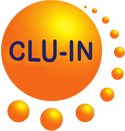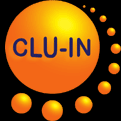Search Result
LOW PERMEABILITY ZONE REMEDIATION OF TRICHLOROETHENE VIA COUPLING ELECTROKINETIC MIGRATION WITH IN SITU ELECTROCHEMICAL HYDRODECHLORINATION
Liu, B., G. Li, K.G. Mumford, B.H. Kueper, and F. Zhang.
Chemosphere 250:126209(2020)
Filed Under: Research
Filed Under: Research
A Cu-Ni bimetallic cathode was tested in an electrokinetic remediation system to couple electrokinetic migration and in situ electrochemical hydrodechlorination as a technique to remediate TCE in a low-permeability zone. Aqueous phase TCE was originally added into the anolyte to obtain breakthrough curves through the low permeability porous soil compartment. The curves also allowed for a better understanding of TCE migration driven by electroosmosis flow using different cathodes. The Cu-Ni cathode resulted in 7.64 mg of TCE migration compared to 5.99 mg with a Ni cathode and 4.22 mg with mixed metal oxide (MMO) cathode, suggesting that the Cu-Ni cathode could drive more TCE flux out of the contaminated soil. About 98.4% of TCE flux that reached the Cu-Ni cathode was electrochemically reduced, which was much higher than that MMO cathode (77.9%) or Ni cathode (59.6%). TCE mass that was transported by electroosmosis flow increased from 2.04 to 6.68 mg when the voltage gradient increased from 1 to 4 V/cm, with the normalized energy consumption increasing from 0.06 to 0.16 kWh/kg per unit water movement, and from 0.54 to 2.55 kWh/g per unit TCE transport. For TCE that did reach the cathode compartment, > 98% degradation maintained at the Cu-Ni cathode with various voltage gradients.
Chemosphere 250:126209(2020)
Filed Under: Research
Filed Under: Research
A Cu-Ni bimetallic cathode was tested in an electrokinetic remediation system to couple electrokinetic migration and in situ electrochemical hydrodechlorination as a technique to remediate TCE in a low-permeability zone. Aqueous phase TCE was originally added into the anolyte to obtain breakthrough curves through the low permeability porous soil compartment. The curves also allowed for a better understanding of TCE migration driven by electroosmosis flow using different cathodes. The Cu-Ni cathode resulted in 7.64 mg of TCE migration compared to 5.99 mg with a Ni cathode and 4.22 mg with mixed metal oxide (MMO) cathode, suggesting that the Cu-Ni cathode could drive more TCE flux out of the contaminated soil. About 98.4% of TCE flux that reached the Cu-Ni cathode was electrochemically reduced, which was much higher than that MMO cathode (77.9%) or Ni cathode (59.6%). TCE mass that was transported by electroosmosis flow increased from 2.04 to 6.68 mg when the voltage gradient increased from 1 to 4 V/cm, with the normalized energy consumption increasing from 0.06 to 0.16 kWh/kg per unit water movement, and from 0.54 to 2.55 kWh/g per unit TCE transport. For TCE that did reach the cathode compartment, > 98% degradation maintained at the Cu-Ni cathode with various voltage gradients.
The Technology Innovation News Survey welcomes your comments and
suggestions, as well as information about errors for correction. Please
contact Michael Adam of the U.S. EPA Office of Superfund and Emergency Management at adam.michael@epa.gov or (703) 603-9915
with any comments, suggestions, or corrections.
Mention of non-EPA documents, presentations, or papers does not constitute a U.S. EPA endorsement of their contents, only an acknowledgment that they exist and may be relevant to the Technology Innovation News Survey audience.




